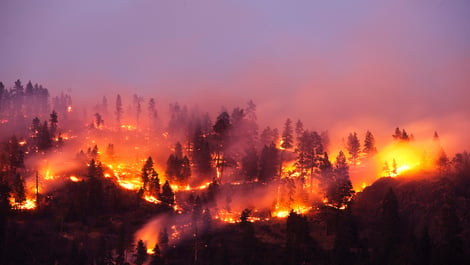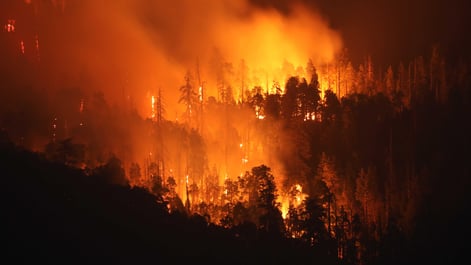Super fog causes 158 vehicle pileup on busy Lousiana highway

Summary
A massive pileup on I-55 in Louisiana, amidst Super fog and wildfire-related challenges, highlights the need for proactive response and effective management of wildfire risks.
Key Highlights
A massive pileup involving 158 vehicles in Louisiana caused seven deaths, injured more than two dozen and left 150 motorists stranded.
The accident was caused by a phenomenon called super fog.
Devastating drought and wildfire conditions continue to impact Louisiana, with more than 60% of the state now categorized as exceptional drought.
On Monday, October 23, 2023, a massive pileup involving 158 vehicles occurred on Interstate 55 in Louisiana, killing at least seven people and injuring more than two dozen others. The pileup occurred during dense fog that dangerously reduced visibility, leaving more than 150 motorists stranded. The National Weather Service office in New Orleans explained that dense fog and wildfire smoke combined to form what is known as super fog.
Super fog poses a significant hazard to transportation because it severely impairs visibility for drivers, pilots, and others navigating the affected area. Accurate and timely weather information and forecasts, like those provided by AccuWeather For Business, are crucial for mitigating the risks associated with super fog and other extreme weather events.
Eyewitnesses described the chaotic scene, with vehicles exploding, crumpled, and charred vehicles on a bridge over Lake Maurepas. The Louisiana Department of Traffic Development reported an 11-mile backup.
AccuWeather's Wildfire Proximity Alerts
AccuWeather’s expert meteorologists are constantly monitoring wildfires and providing proximity alerts. In the case of the incident on I-55, the wildfire proximity alerts would have been instrumental. These alerts offer real-time information on the proximity of wildfires to specific locations. Being alerted to nearby wildfires can help your business prepare for possible impacts.
By receiving these crucial alerts, companies would have been aware of any wildfires in the vicinity. Here are some examples:
- Transportation: AccuWeather's wildfire proximity alerts would have aided highway authorities in making informed decisions about road closures and detours, thus preventing accidents and protecting lives.
- Public Safety: These alerts could have supported public safety agencies in effectively managing emergency response operations during dangerous.
- Logistics: AccuWeather's alerts would have facilitated the rerouting of shipments, ensuring that goods reached their destination safely, even amidst deteriorating air quality.
AccuWeather For Business, with its Superior Accuracy™, is committed to helping businesses, communities, and schools make better-informed decisions, even in the face of extreme weather conditions. By utilizing services like wildfire proximity alerts, organizations can protect lives, reduce operational costs, mitigate risks, and safeguard their reputations.
The benefits of AccuWeather's services go beyond just providing data; they offer the potential to save lives, reduce injuries, and enhance overall safety. To learn more about Wildfire Proximity Alerts by AccuWeather, request a consultation.








